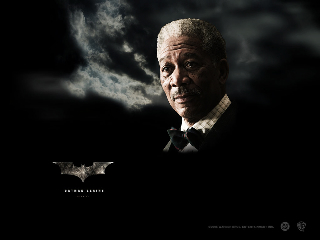
January 24, 2008

Musing on the Twilight Language.
Sometimes, I must blog about the Fortean and the anomalistic, as it applies to current events. I need to move these thoughts along, so for those looking for something strictly zoological or cryptozoological, you might wish to skip this one. For those who allow yourself to go down this path with me, here goes….
This morning Craig posted news items on reports of Bigfoot or Sasquatch being tracked in Wisconsin. One aspect of the story that may have whizzed by you is the twilight language; the name game is part of the account.
Did you notice where the sightings are occurring? They are taking place around Seely, Wisconsin. The name “Seely” is worthy of our Fortean attention, as pointed out to me by Robert Schneck.
In the classification of fairies, Celtic folklore discusses the good and the bad fairies.
Two of the most prominent categories, derived from Scottish folklore, are the division into the Seelie Court and the Unseelie Court. William Butler Yeats, in Irish Fairy and Folk Tales, further divided them into the Trooping Fairies and the Solitary Fairies. These categories are generally applied to any fairy-type creature, from elves, pixies and brownies to ogres and giants.Classification of Fairies, Wikipedia.

Bigfoot is hardly a fairy in the way most people think about them, but for those who study fairies, they know all fairies are not the Little People. Some fairies are larger hominoids, namely orges, trolls, and giants. Orges and giants in Seely, Wisconsin makes some sense, in a Celtic translation of the events unfolding there.
Of course, you can take or leave my thoughts on the twilight language. But sometimes it can reveal an intriguing stream of consciousness or a quicksand of foggy thoughts, I suppose.
Fairies, for example, link events and places with a sense of wonder and mystery; indeed, fairies and fairylands often are the twilight language captured in monikers and on the landscape. I have written extensively about the links within the “Fayette Factor.”
“Lafayette” translates into “the little fairy” or “the little enchantment.”

Now, take, for instance, the death of Heath Ledger. Hardly anomalistic, one would think, although the media is making it more mysterious, everyday. What first jumped out at me was the location where Ledger lived and died.
Heath Ledger was found in his fourth-floor apartment at 421 Broome Street, between Crosby and Lafayette Streets in SoHo, New York City, on the day of the Full Moon, January 22, 2008. Perhaps a minor detail, one to be overlooked and forgotten. Or not.
Heath Ledger, who was well-known for many of his acting roles, played the role of The Joker in the forthcoming Batman installment, The Dark Knight, set to be released during the summer of 2008. (Several of Ledger’s characters, such as in the two Terry Gilliam-directed films, The Brothers Grimm and The Imaginarium of Dr. Parnassus, have been edgy and Fortean.)


Ledger’s The Joker is based on the first two appearances of Joker in the Batman comic books, as well as The Joker’s portrayal in the graphic novel The Killing Joke. Ah, the Phantom Clown brought to life, to meet death.
To prepare for the role, Heath Ledger lived alone in a hotel room for a month researching the character and developing his performance. Ledger claimed he was basing his characterization upon Sid Vicious and the charismatic delinquent Alex DeLarge (played by Malcolm McDowell) in A Clockwork Orange (1971).

Ledger found the role extremely difficult, and suffered insomnia as a result, leading to his use of sleeping pills.
Ledger’s family is placing heavy pressure on the New York Police Department and the media to not discuss suicide with regard to Heath Ledger’s death. Perhaps it was an accident, whatever that is. Certainly, suicide notes are only found in 20% of all self-inflicted deaths, so the lack of a note is an indication of nothing.
For now, and perchance for always, Heath Ledger, who soon will be remembered for his role as the death-clown, The Joker, died mysteriously.

About Loren Coleman
Loren Coleman is one of the world’s leading cryptozoologists, some say “the” leading living cryptozoologist. Certainly, he is acknowledged as the current living American researcher and writer who has most popularized cryptozoology in the late 20th and early 21st centuries.
Starting his fieldwork and investigations in 1960, after traveling and trekking extensively in pursuit of cryptozoological mysteries, Coleman began writing to share his experiences in 1969. An honorary member of Ivan T. Sanderson’s Society for the Investigation of the Unexplained in the 1970s, Coleman has been bestowed with similar honorary memberships of the North Idaho College Cryptozoology Club in 1983, and in subsequent years, that of the British Columbia Scientific Cryptozoology Club, CryptoSafari International, and other international organizations. He was also a Life Member and Benefactor of the International Society of Cryptozoology (now-defunct).
Loren Coleman’s daily blog, as a member of the Cryptomundo Team, served as an ongoing avenue of communication for the ever-growing body of cryptozoo news from 2005 through 2013. He returned as an infrequent contributor beginning Halloween week of 2015.
Coleman is the founder in 2003, and current director of the International Cryptozoology Museum in Portland, Maine.
Filed under Bigfoot, Breaking News, Comics, Conspiracies, Cryptofiction, Cryptomundo Exclusive, Cryptotourism, CryptoZoo News, Cryptozoology, Folklore, Footprint Evidence, Media Appearances, Movie Monsters, Obituaries, Photos, Pop Culture, Twilight Language